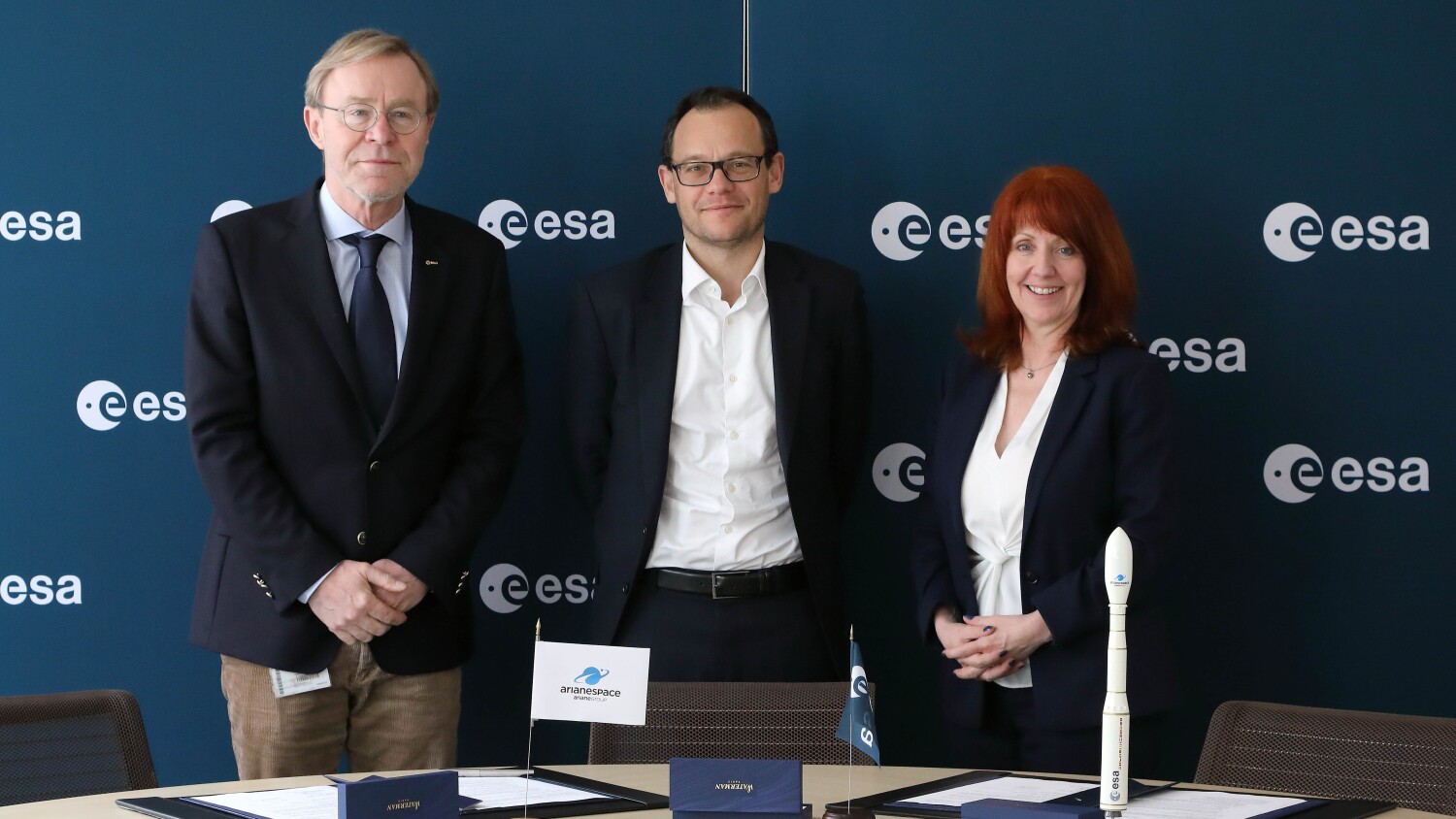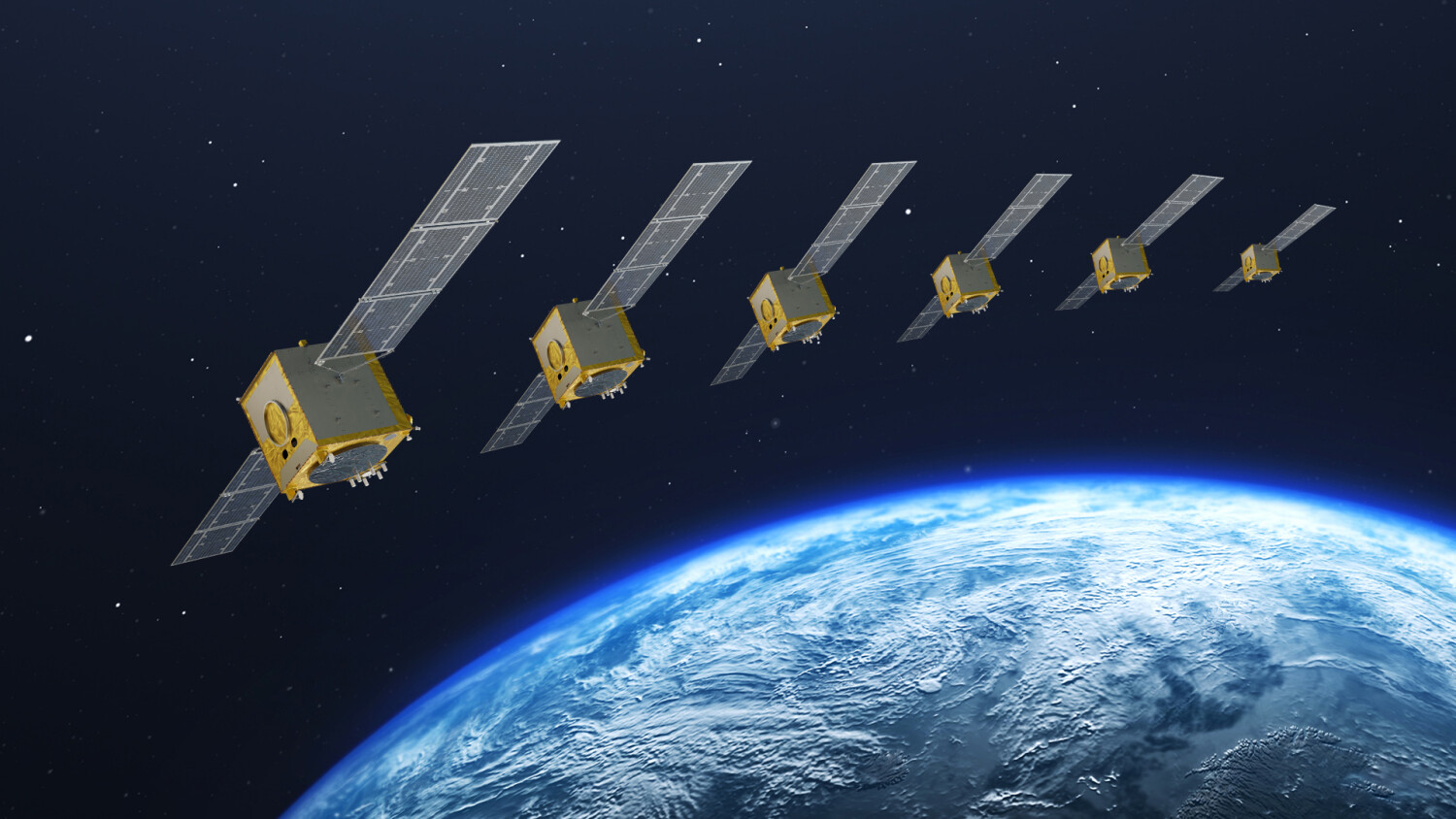On Sunday, March 9, in its first mission of the year, Arianespace successfully launched the European Space Agency's first ATV (Automated Transfer Vehicle), dubbed Jules Verne, towards its rendezvous with the International Space Station.
37th Ariane 5 launch and 23rd successful launch in a row.
The latest successful launch of an Ariane 5 confirms that Arianespace’s launch Service & Solutions continue to set the standard and guarantee access to space for all stakeholders, whether national or international space agencies, private or government operators.
With 23 successful launches in a row, Ariane 5 continues to prove its reliability and availability. It also set a new payload record, boosting nearly 20 metric tons into low Earth orbit on this mission.
Ariane 5 ES flight qualified
The new Ariane 5 ES version was used for the Jules Verne ATV mission. Its lower composite, including the cryogenic main stage and solid boosters, is identical to that on the Ariane 5 ECA launcher, while the upper composite features a storable-propellant upper stage that can be re-ignited in flight. Arianespace will use this version of the launcher for subsequent ATV missions and, if applicable, satellites in the Galileo constellation.
A new mission for the Guiana Space Center
This launch marks Arianespace’s first mission to the International Space Station (ISS). The Guiana Space Center thus joins the very select club of launch sites serving the ISS, along with Baikonur and the Kennedy Space Center (Cape Canaveral).
Coming just a few weeks after the docking of the Columbus space laboratory to the Space Station, the successful launch of the Jules Verne ATV shows once again that Europe plays a major role in manned space missions.
Jules Verne ATV mission at a glance
The mission was carried out by an Ariane 5 ES launcher from Europe’s Spaceport in Kourou, French Guiana. Liftoff was on Sunday, March 9, at 1:03 am local time in Kourou (04:03 UT, 5:03 am in Paris and 7:03 am in Moscow).
Provisional parameters at injection of the storable-propellant upper stage (EPS) were:
Perigee: 259.2 km for a target of 259.5 km (±10)
Apogee: 263.6 km for a target of 264.3 km (±15)
Inclination: 51.61 degrees for a target of 51.63 degrees (±0.09°)
ATV, the space freighter
The ATV is designed to bring supplies to the ISS (water, air, food, propellants for the Russian section, spare parts, experimental hardware, etc.), and to reboost the ISS into its nominal orbit. The ISS now weighs more than 240 metric tons, including the recently attached European laboratory, Columbus. After being docked to the ISS for up to six months, the ATV will be loaded with waste by the astronauts and deorbited.
After separating from the launch vehicle, the ATV will be autonomous, using its own systems for energy (batteries and four large solar panels) and guidance (GPS, star tracker), in liaison with the control center in Toulouse. During final approach, an optical system will guide the ATV to its rendezvous with the Space Station, where it will automatically dock several days after launch. The ATV will remain docked to the ISS for nearly six months, before separating and making a guided reentry and disintegrating in the atmosphere.
The ATV was built by EADS Astrium at the head of a consortium of European manufacturers. A large cylinder measuring about 10 meters long by 4.5 meters in diameter, the ATV comprises two main parts: a service module with the avionics and propulsion systems, and a pressurized cargo carrier.







